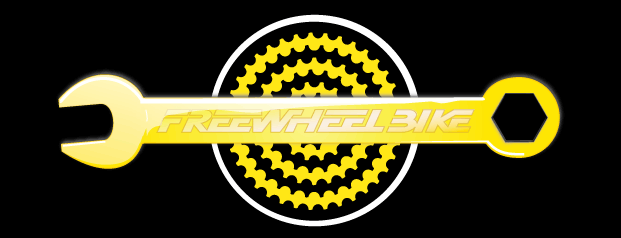Recently a few of us mechanical type Freewheel Golden Wrench bike fixer people attended Park Tool's 50th Anniversary event. For half a century Park Tool has been doing nothing but making bicycle support goodies: no brief stints in NAPCAR; no contracts with NASA; no farm equipment; no joining the circus; no martial weapons (although, if I were attacked by a moose, I should like to have a
PW-3 handy). You will be relieved to discover that they still make their iconic
pizza cutters, one of which graced my own kitchen table when I was a lad.
What makes Park Tool so rad?
From our perspective as bike fixer types, they feel like family. They are bike shop people through and through. They started making tools back in 1963 because the current tools on the market just weren't good enough for the fancy new bikes that were coming out back then. Have you ever tried to fix a space station with tools you bought at the grocery store? That's what Howard and Art felt like when they were trying to adjust Campagnolo hubs. All you could get at the time were wrenches that had been precision engineered for delicate operations such as scratching your back or whacking the carburetor on your tractor.
So they made their own tools. And at some point in the 1980's they quit the bike shops and started making tools full time. It's been full on since then with hardly a glitch. Consistency? If you own a Park repair stand from any time in the history of the company, it was welded by the same guy who is still welding them today.
Here's a point of trivia: At some point they took time out of their busy schedules and
invented the color blue. Thanks, Park Tool!
There's a Discovery Trek (with the chain falling off) and some choice Paramounts on that rack.
They had some Stingrays in the lobby, let me tell you what!
Much of our evening was spent in the presence of Calvin Jones, the indefatigable mascot of Park Tool, and a bike shop guy if you've ever met one. He gave us a tour of their new facility in Oakdale on the condition that we didn't take pictures of secret stuff. We inadvertently took some pictures of secret stuff, but we can't put them on the blog. Sorry, Calvin, if you read this. It was Pete.
When you stared at these, you saw a hexagon of pink spots floating around for about an hour.
At any rate, Calvin's tour took us through their production area, their new warehouse, and their demo shop area, where we saw some familiar and some unfamiliar tools, including ones that haven't quite been released yet. After some hearty jibber-jabber, it was time for some foooooood. If you ever acquire a time machine and you are wondering what to do with it, I highly recommend crashing this party and sampling the mashed potato bar. It was one of those magical moments in my culinary experience.
Oh yes, it was very nice.
Having stuffed our boilers with choice dainties, we were in excellent spirits to listen to the program. It consisted of a fascinating video of the founders of the company telling their story, followed by several well-wishers from the greater bike industry wishing them well. Eric Hawkins, son of founder Howard Hawkins, wrapped up with a toast to the future.
Art Engstrom, co-founder
Industry luminary, whose name escapes me
Luscious piece of birthday cake
Congratulations, Park Tool, for 50 years of making our job better!


























